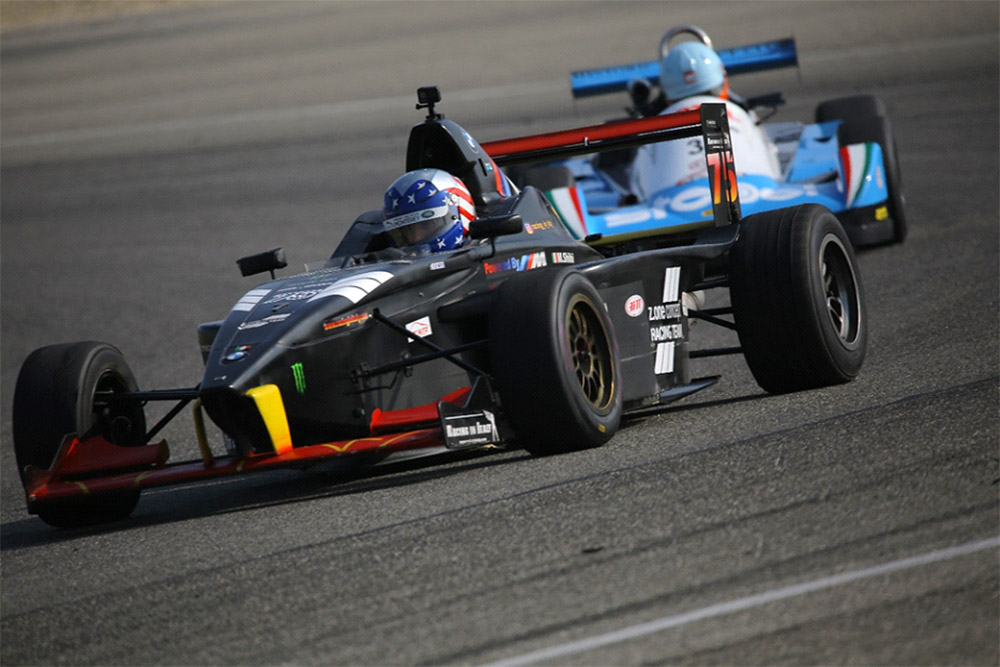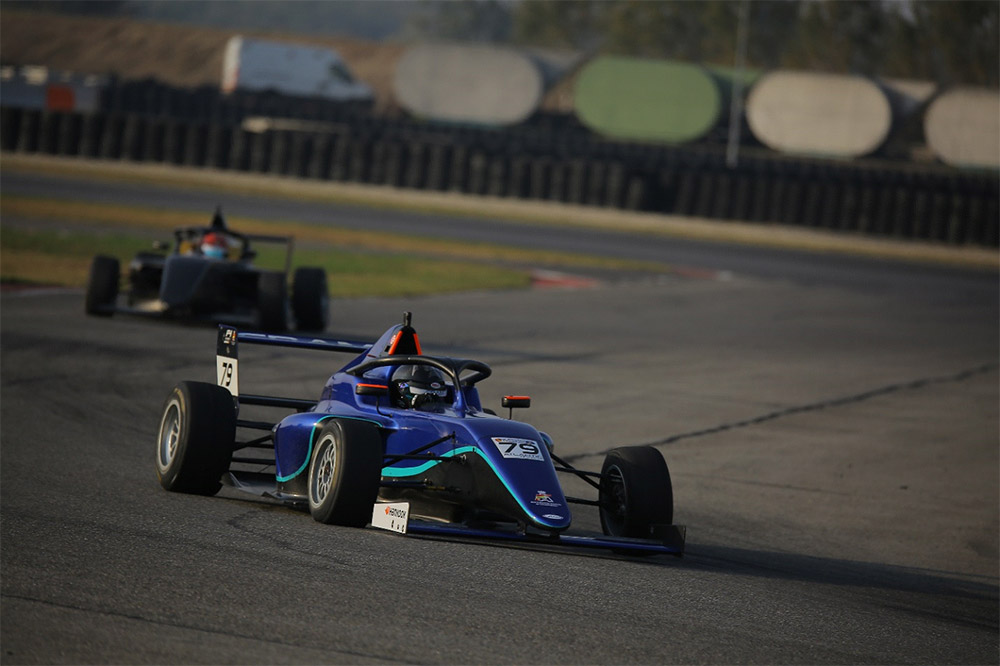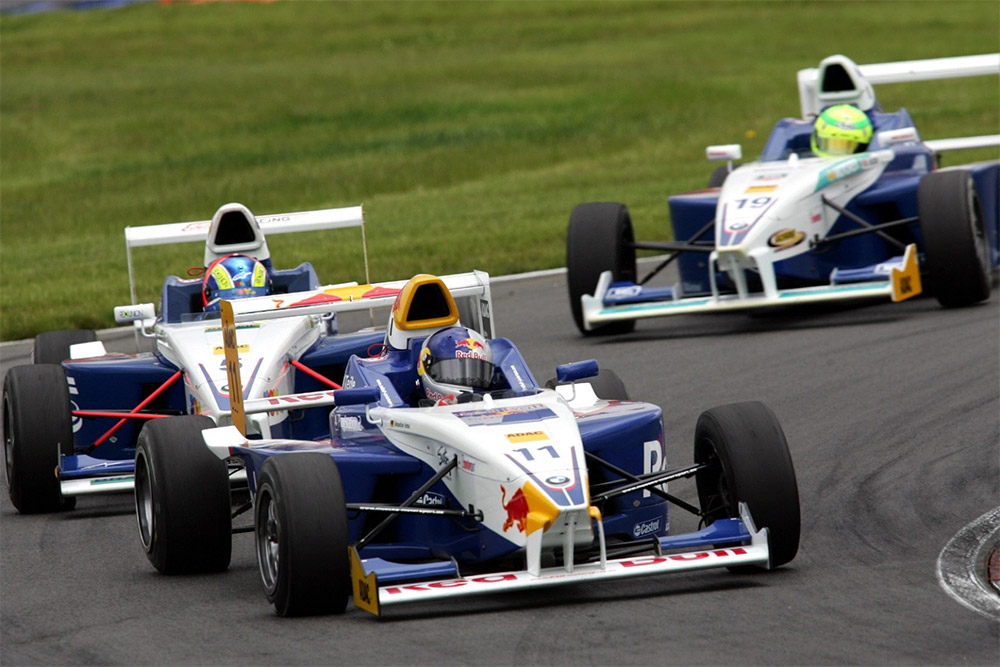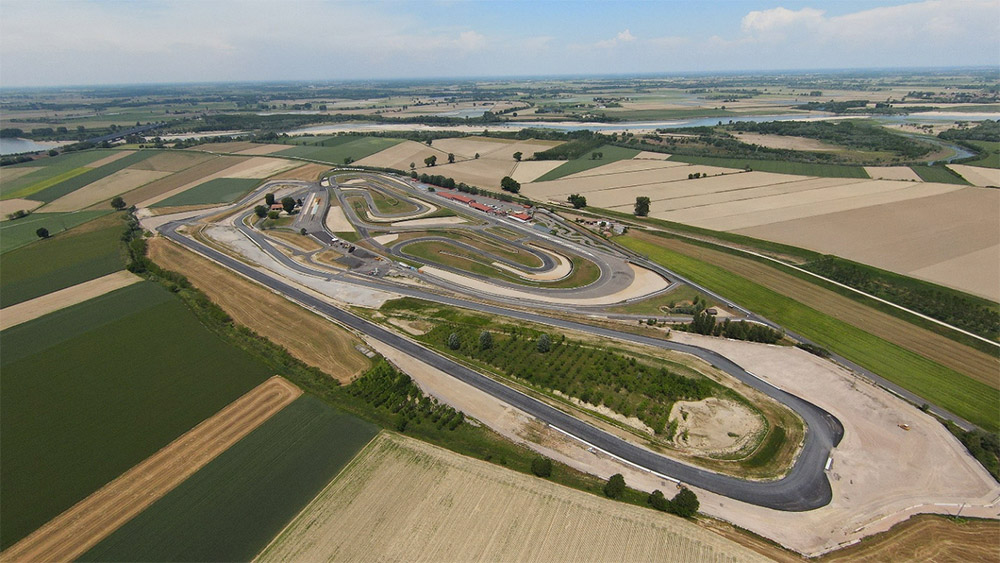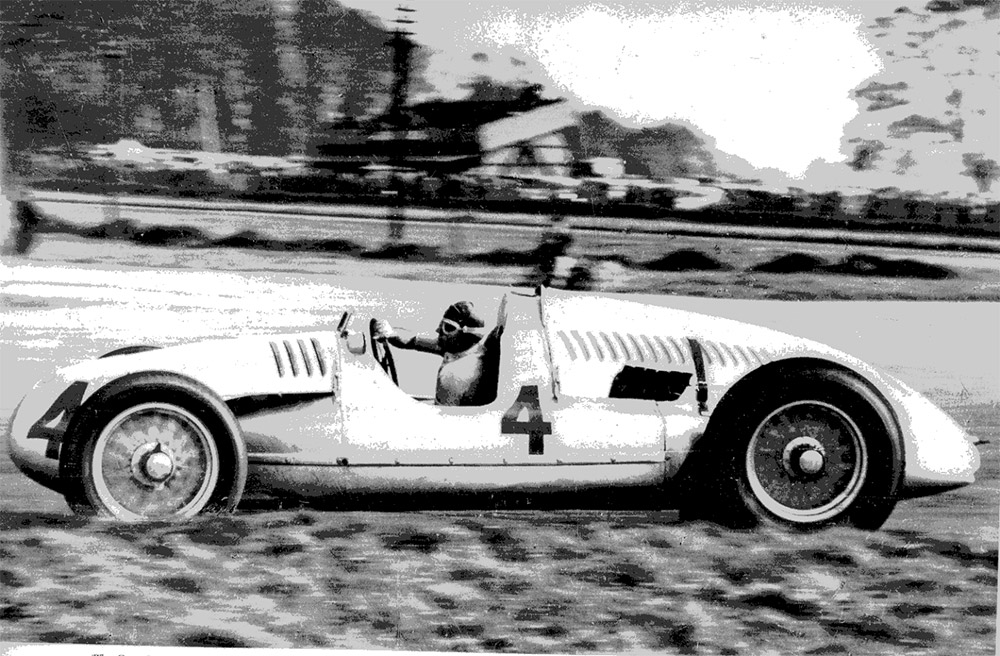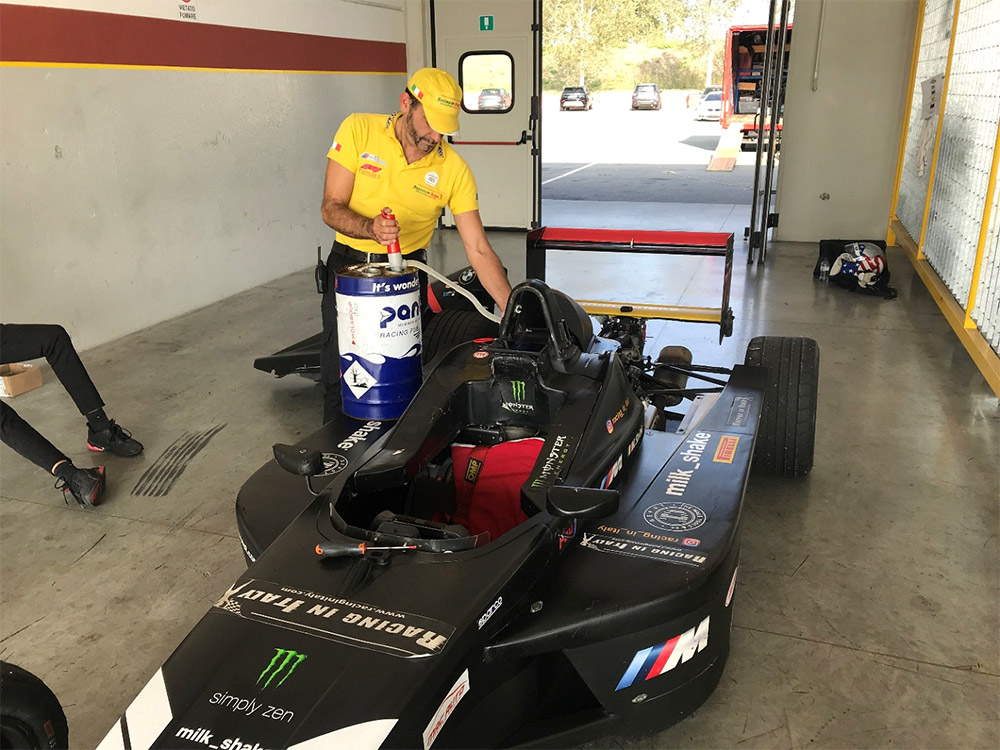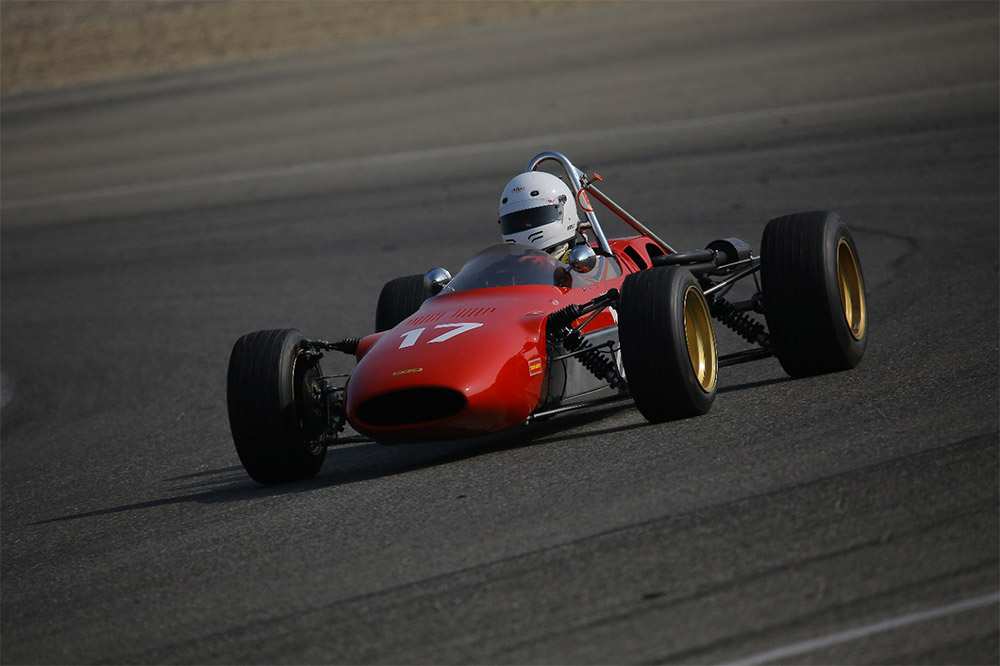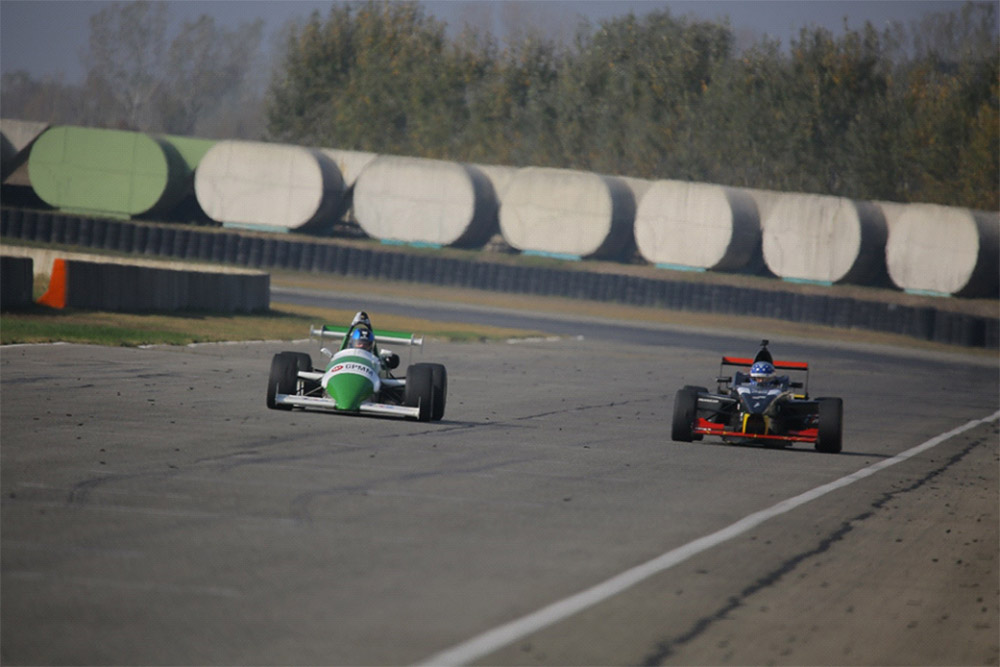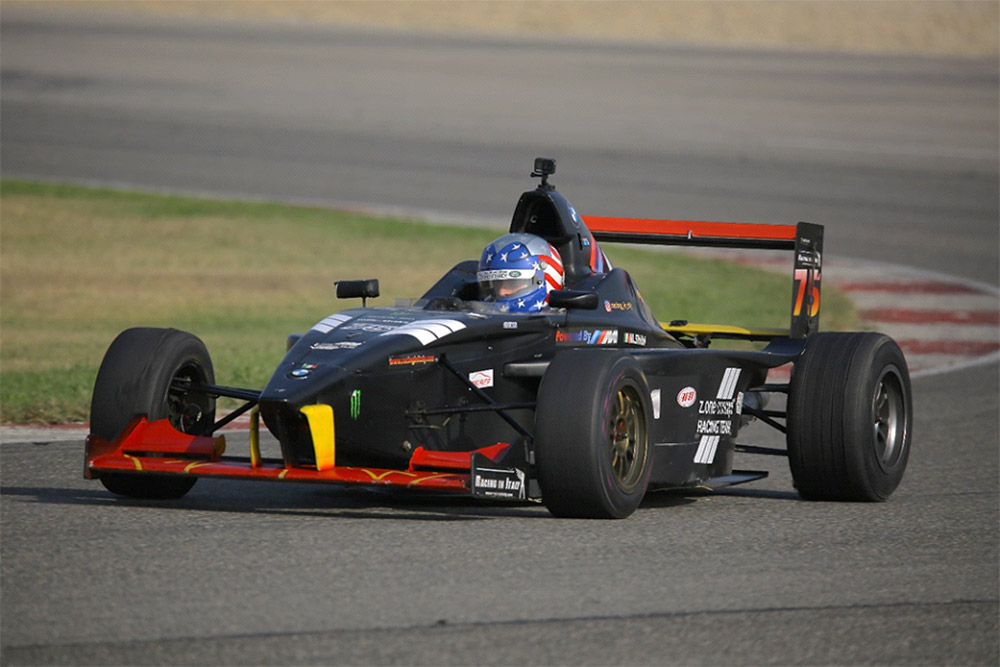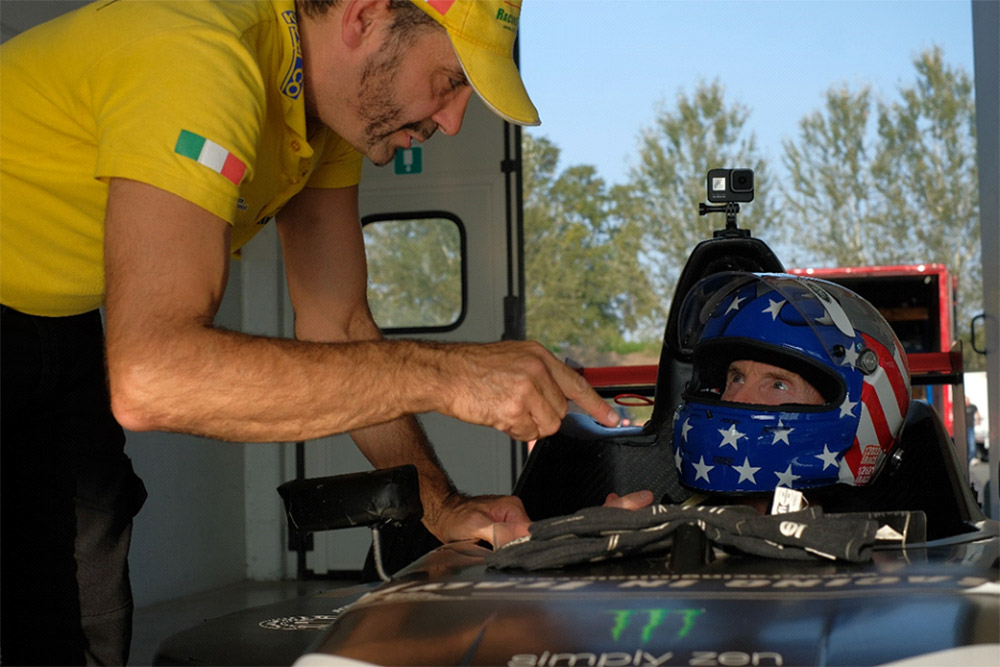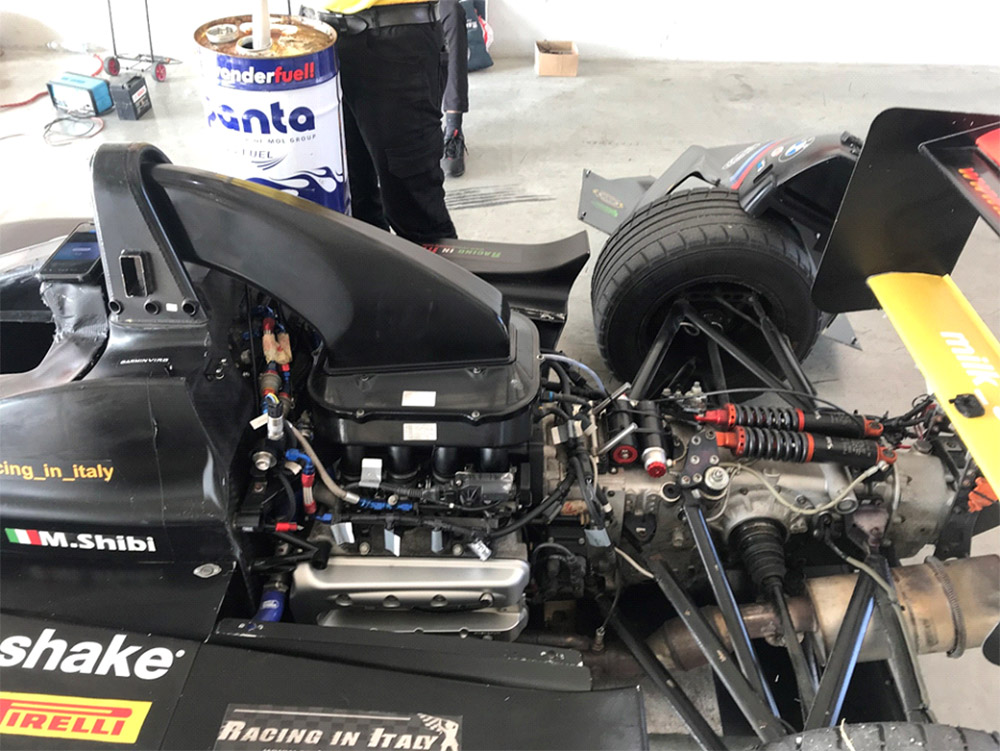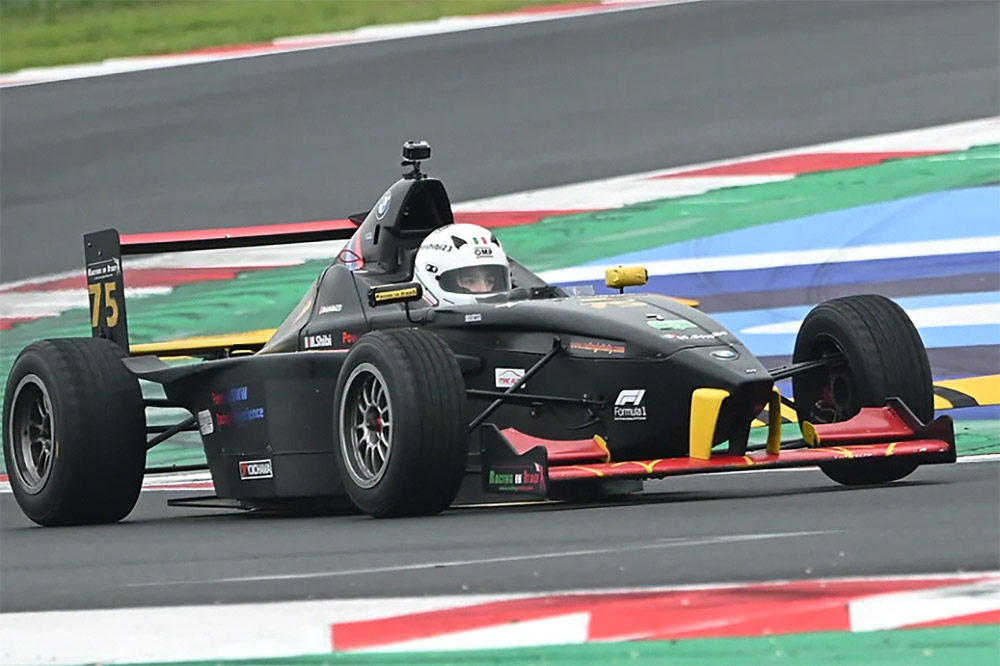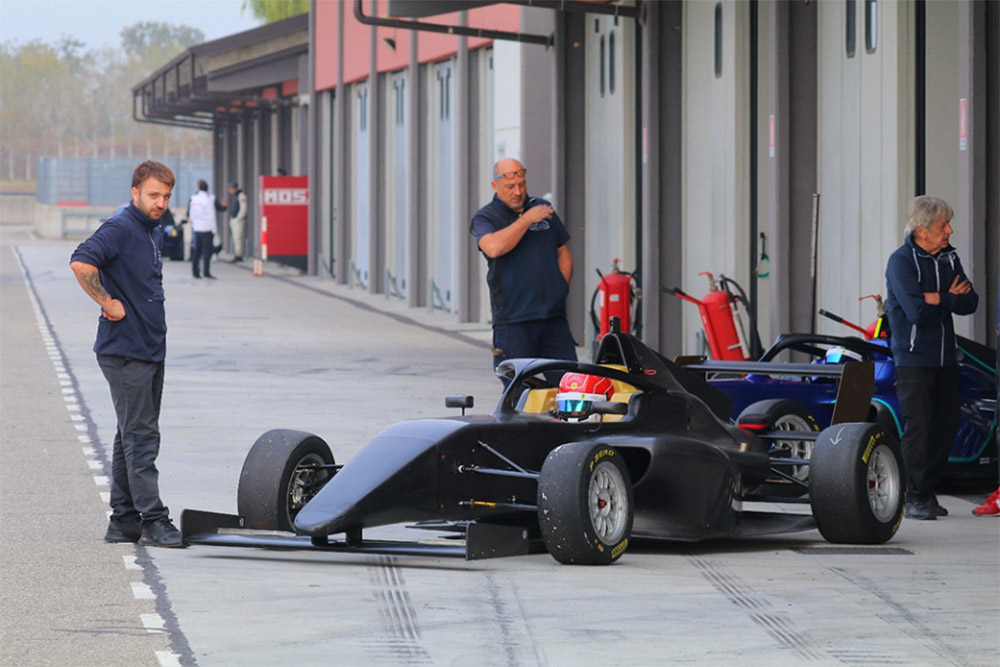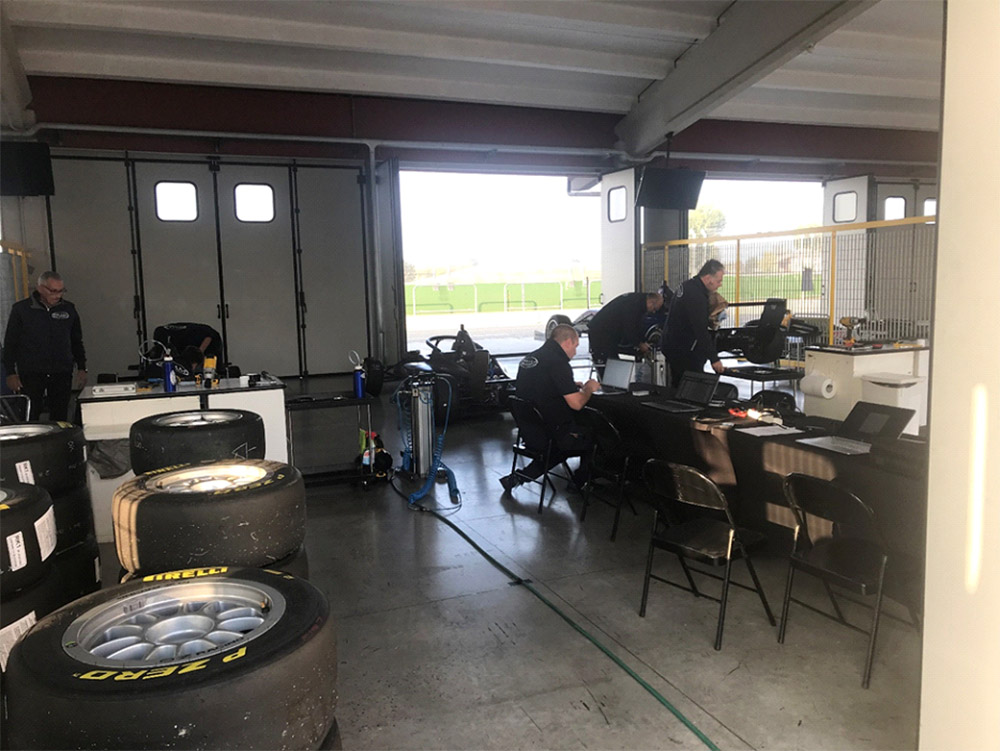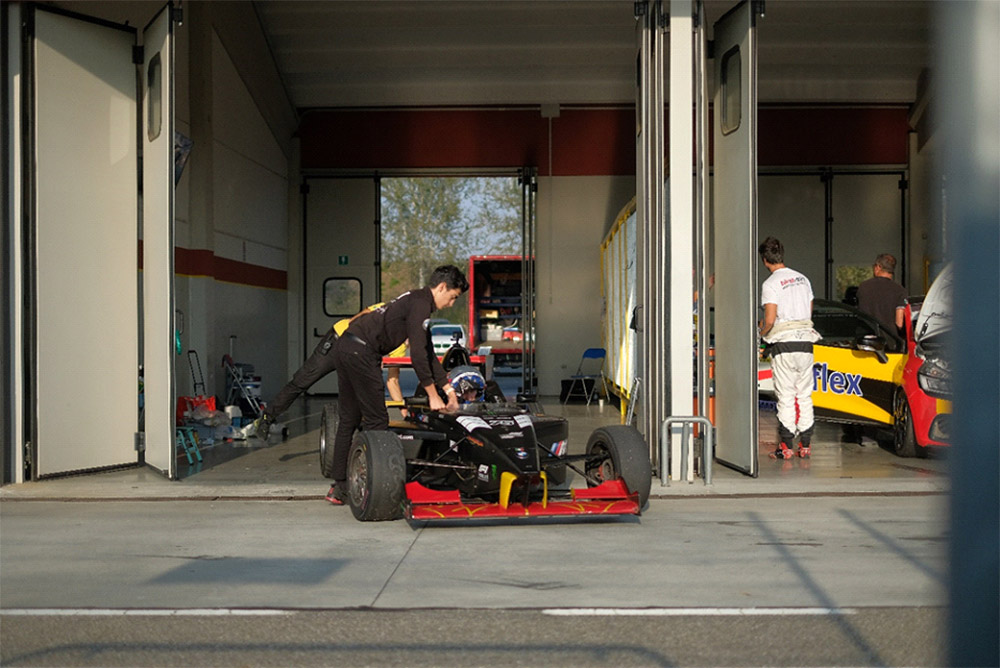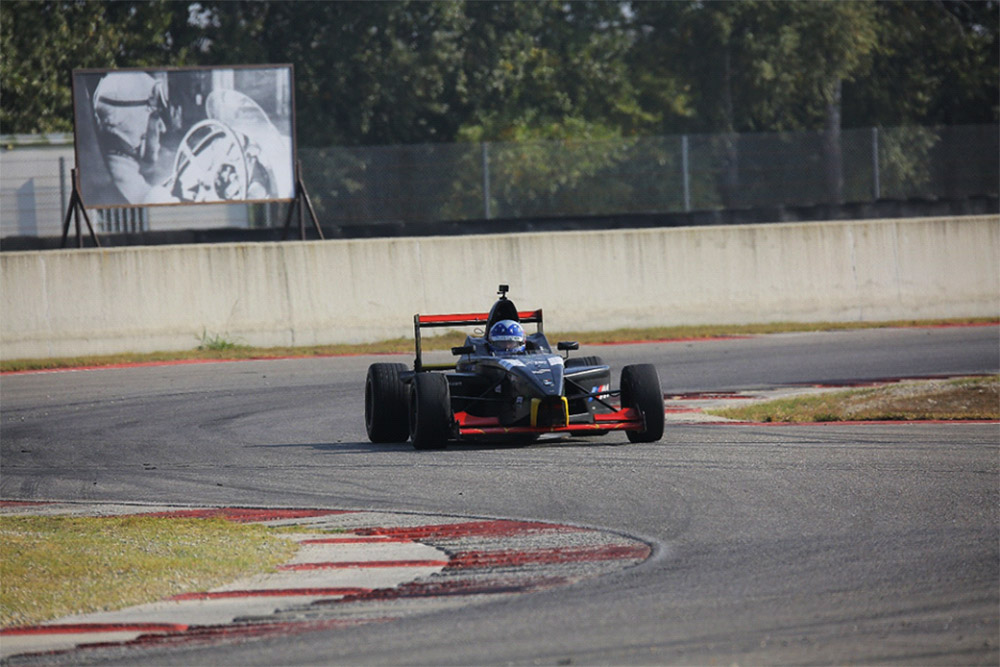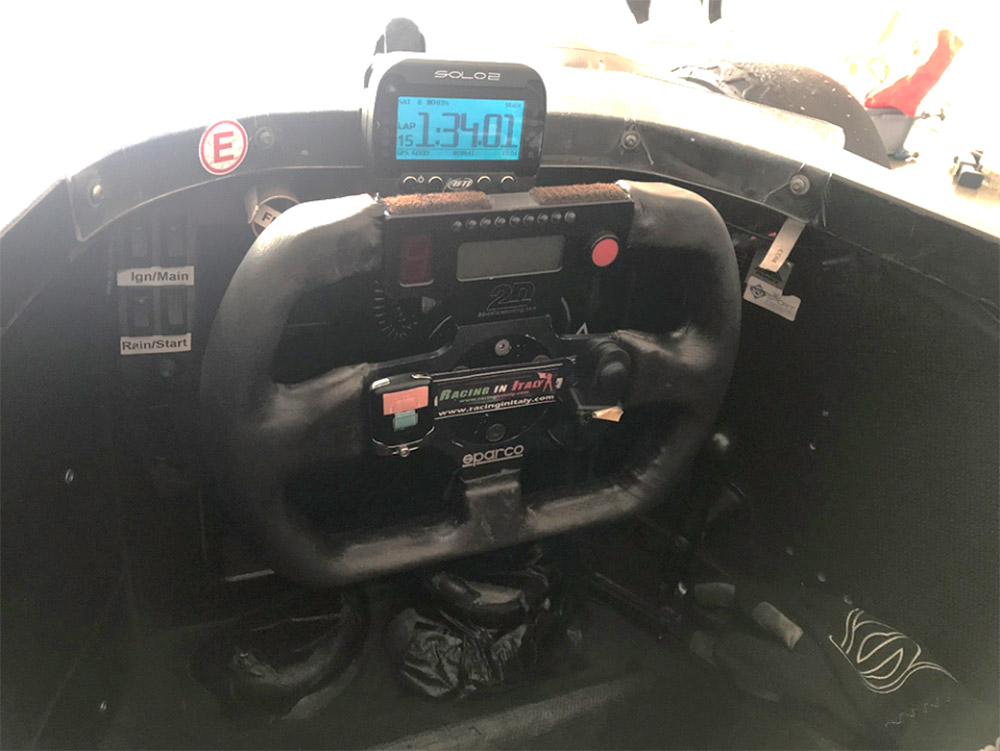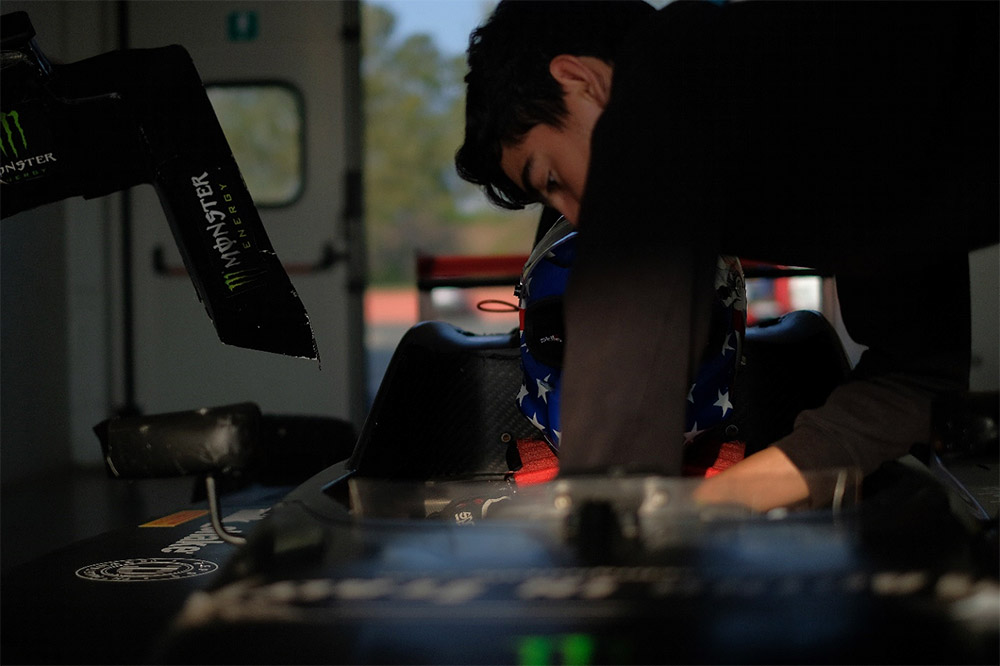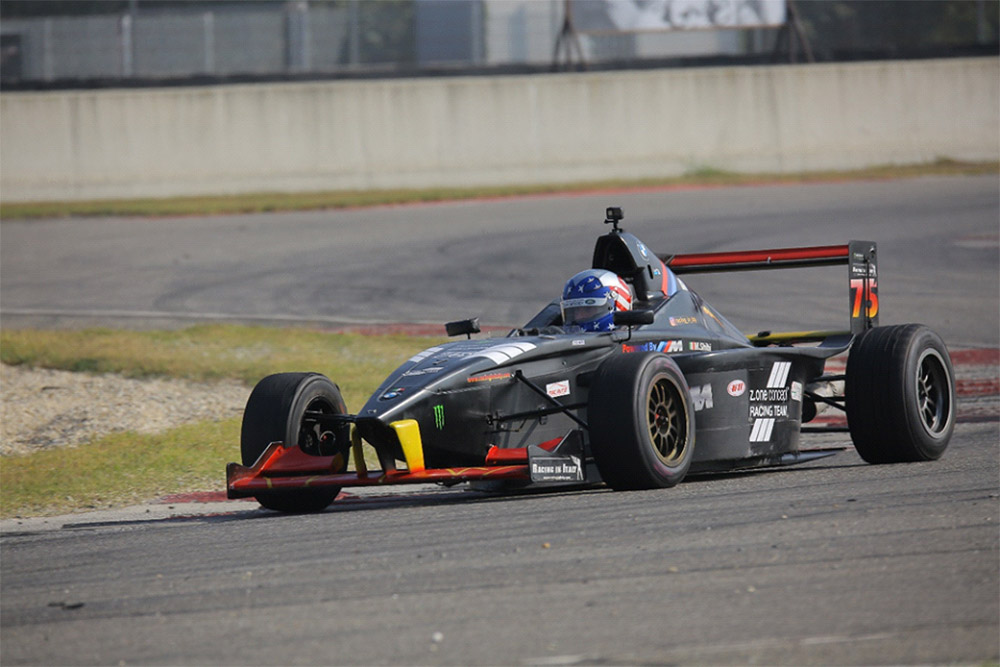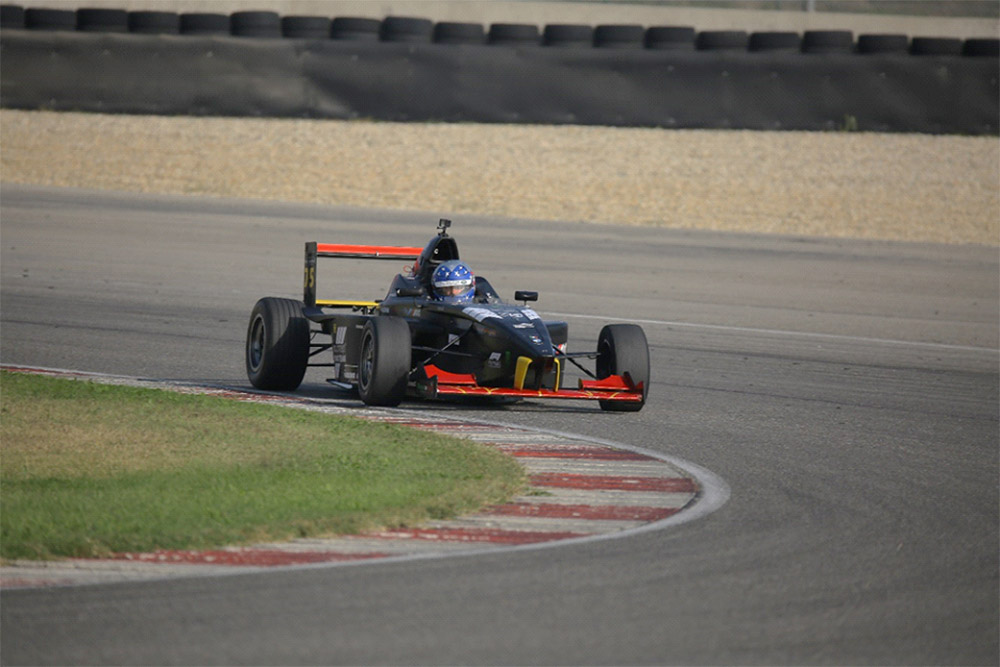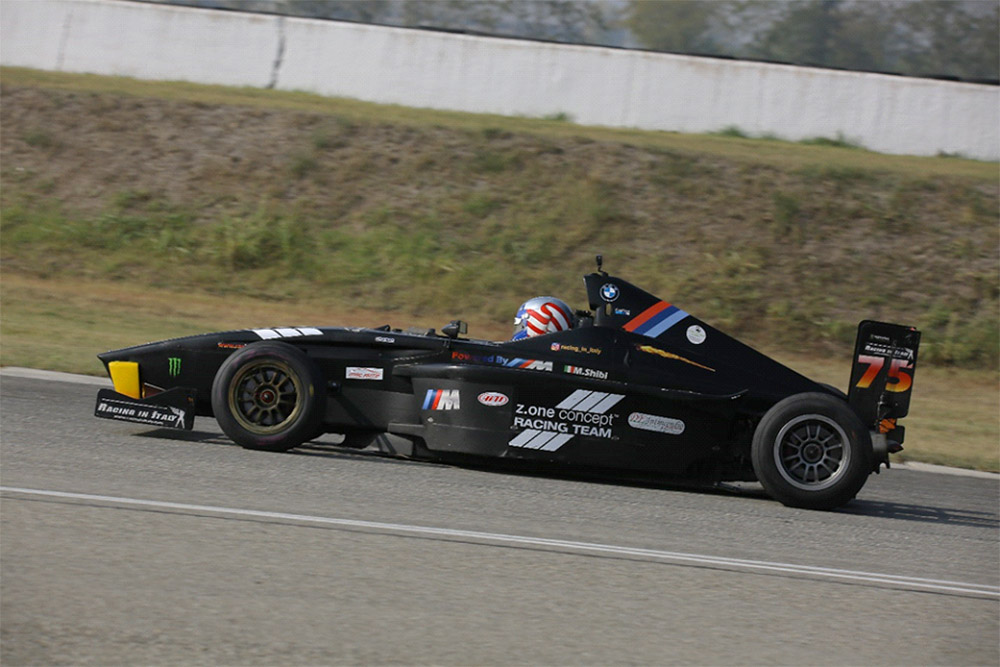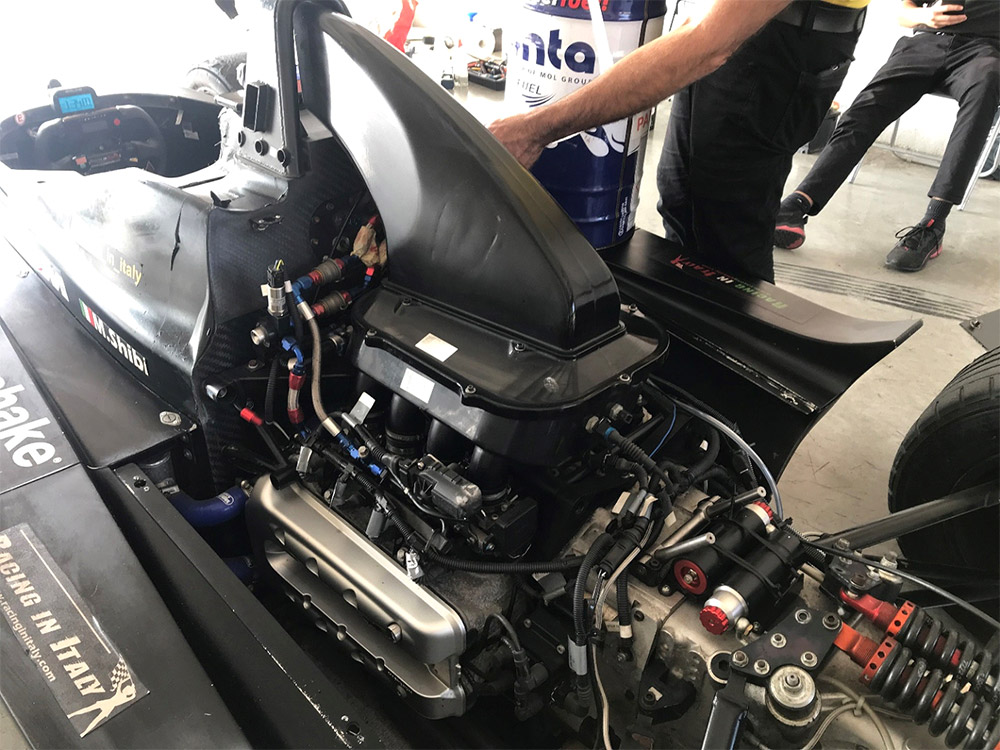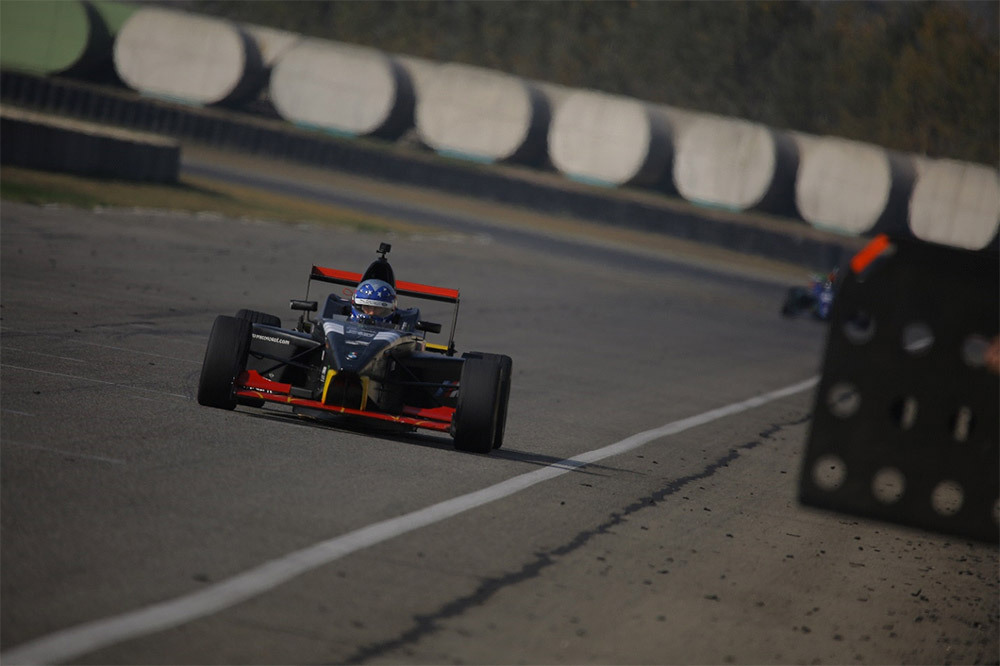Many believe that the purest form of motorsport is single-seater open-wheel competition. No roof, no doors, no air conditioning, the barest of bodywork, no parts without purpose, and no purpose other than racing. The ability to tame a mechanical beast, challenge the clock and outrun a field of others is compelling. It can, however, be a frighteningly expensive proposition. How do young drivers get a glimpse? How do young drivers chart a path to join their heroes on the Formula One grid?
The path often starts with Formula 4. Standard regulations keep competition close and costs constrained. Driver skill and engineering makes the difference rather than buying speed with development and technology. No racing is a low budget proposition, but Formula 4 fields are proving grounds for drivers to show their talent and develop their skills and for Formula One teams to spot the next generation of drivers.
Four-time World Champion Formula One driver Sebastian Vettel got his start driving a kart around the backyard of his family’s home in Heppenheim, Germany. His breakthrough came when the 16-year-old Vettel made the jump from competitive karting to Formula BMW ADAC – a precursor to the current Formula 4 single-seater series. He finished second in his first season and crushed the competition in his second season, winning 18 of 20 races.
The Speed Journal searches for the best driving experiences around the world. A day with the Racing in Italy team at the Tazio Nuvolari Circuit was an ideal Formula 4 experience for Speed Journal Principal Jeff Francis. The track is located about an hour drive south of Milan. The 2.8 mile road course wraps around 11 turns and mixes tight twisty corners with high speed straights.
The track’s namesake is considered to be the best Italian racing driver of all time – and some would say the best in history. Nuvolari was fearless. He raced for Enzo Ferrari when Ferrari looked after Alfa Romeo’s racing operations. He raced all the big events of the 1930s – Mille Miglia, Targa Florio, 24 Hours of LeMans and Grand Prix races. He was born, lived, died and is buried in Mantua. Mantua is a two-hour drive east of the Nuvolari Circuit and both are adjacent to Italy’s Motor Valley – the home of the biggest players in Italian motorsport.
Team Principal and Chief Instructor Oren Shibi leads the Racing in Italy operation. Oren is an electronic engineer by trade and a former Israeli Air Force technician. He raced open-wheel himself before establishing a team in 2011 for his son Mei – 6 years old at the time – to race in the Italian Go Karting championship. The business expanded in 2015 to include formula cars and now races in Formula 3 and Formula 4 championships.
In addition to its own racing, Racing in Italy offers a wide variety of driving experiences and track support for customers. Francis’ full-day Formula 4 experience with Racing in Italy took advantage of an open track day at the Nuvolari Circuit. Arriving at the circuit, however, it was clear this was no casual amateur track day. Professional race teams lined up their rigs set up shop in the garages. The sound of revving motors filled the air while mechanics swarmed around the cars armed with tools ranging from laptops to hand tools. Drivers in their race suits made final adjustments to their helmets and stretched their limbs to get the blood flowing. A handful of vintage formula cars mixed with modern open-wheel racers and GT sportscars.
Open-wheel and sports racers alternated for 30 minute sessions with the GT cars. The split maintained track space for all and minimized speed differentials that can lead to unwelcome drama. Open-wheel cars typically do not run multi-class events, so they are less used to the visibility and passing challenges that come from slower and faster cars negotiating for the same piece of real estate.
Rather than an extensive classroom session, Oren and his team got Francis strapped into the car and sent out to learn the basics on the fly. A quick briefing covered key points. Use the clutch on all upshifts and downshifts, work smoothly through the 6 speed sequential Hewland gearbox, brake in a straight line to avoid spinning, and gradually roll into the throttle exiting corners. The briefing also covered flagging basics to appreciate messages from corner workers around the track.
Helmet visor down, belts tugged tight and out on track. Francis focused on learning the car and learning the track. Rear visibility in an open wheel car with tiny mirrors can be challenging. Forward visibility, however, is much better than a sportscar with good sightlines to each exposed wheel. It took some time to adapt to the technique of clutch-shifting and the car’s braking preferences and power capabilities. The slick tires gained grip as pressures and temperatures rose but the track surface itself was green and cold.
Each track has its own unique character, starting from the second the driver leaves the pits and merges on the racing line. Different surfaces have different levels of adhesion and each corner exit has its own run-off. Understanding the limits and the costs for overstepping the limits is key to know how hard to push.
After the first session, the de-brief got started. With the luxury of seven 30 minute sessions to work with through the day, Oren’s approach was to make one improvement after each debrief and not overwhelm the driver with too many variables to focus on. Speed would come with time and methodically dialing in areas of potential improvement.
Formula 4 is a set of technical regulations and various manufacturers make cars with their own chassis and engine combinations. As the name implies, the 2011 Formula BMW in Racing in Italy’s stable is equipped with a 4-cylinder 16-valve BMW engine. French race car builder Mygale made chassis FB2-SR-269 with a manufacture date of April 21, 2011. Oren’s son, Mei, raced the same car in the 2020 Italian Formula 4 Championship, finishing sixth in the season championship. He built on that experience and graduated to Formula 3, recording fourth overall in the 2022 Italian Formula 3 Championship and second among those under 23 years of age. The fact that a 2011 Formula 4 car has such a long competitive and useful life is a testament to the durability of the technical formula.
After the second session, Mei reviewed in car camera footage on a laptop to help refine the technique. He also was able to recommend optimal gears for specific places on the track. The suggestions removed some of the guesswork, but Francis still needed to hustle the car at the right pace to make the changes work.
Oren confirmed that the other formula drivers on track were professional grade, looking to grow their professional career. They were quick and consistent and their passes decisive. This wasn’t a racing session but they provided real-time demonstrations of cornering lines and what the cars were capable of. Chatter in the paddock was that youngsters, including some from as far away as Australia, were on hand attempting to find a path to the Ferrari Formula One junior development program. They pushed hard, as evidenced by locked front tires under heavy braking and tires dipped off the pavement into the gravel pushing the boundaries. It took a sharp eye to spot gravel on the track that wasn’t there the lap before.
After the third session, Oren used the in-car camera on the laptop to focus on turns 8 and 9. He recommended a single late apex rather than a double apex in an effort to maximize exit speed. Carrying more speed down the short straight allowed an upshift before entering the chicane of turns 9 and 10. If he found that upshift, Francis knew he had carved the corners correctly. If not, he knew that he had given up time along the way.
After the fourth session, the track began to heat up and the lapping cars began to lay rubber down on the racing line. Mei shared his experience optimizing cornering lines and throttle control. The driver needs to pick the right line, work the throttle, use all the available track, and assess available grip as the track changes. The stopwatch never lies, but the driver can sense if they’re further ahead or behind the same point on the track when up shifting compared to prior laps.
As a purpose-built single-seater, the Formula BMW will never be mistaken for a Porsche or Ferrari in terms of driver comfort. Space is tight inside the driver’s compartment. After spending the day at the controls, Francis had a greater appreciation for why most open-wheel race car drivers are typically more diminutive in stature compared to their peers driving GT sportscars.
The structure of the car intruded below the left knee which required some contortionist movements to reach the clutch pedal without overlapping the left foot onto the brake pedal. Oren recommended keeping the left side of his left foot touching the inner structure for reference to know that the foot was only on the clutch and not on the brake. It required constant pressure on the outside of the left leg against that structure. It became more of an issue toward the end of the day as fatigue started to set in but was also just another quirk to manage in search of speed.
The seating position was all formula car, requiring a movement similar to putting on a pair of tight pants for slithering down into position. The driver reclines with feet forward rather than sitting upright with feet below. The pedals were in a natural position, but were housed deep within the nose. The driver can’t see their own feet, relying on feel and memory to manage the pedals.
A removable foam pad in the shape of a horseshoe fit snugly around the driver’s head and shoulders to keep the head stable amidst the high cornering loads. When time was an issue, the driver corkscrewed their body to twist their torso and hips to slide past. When not in a rush, the foam piece is removable to make entry and exit much easier.
After the fifth session, the instructors focused on the fast complex of turns 4 and 5. Easier said than done, but a fast lap requires full throttle from the hairpin exit of turn 3 all the way to turn 6. Each session crept closer and closer to the ideal.
As the day wore on, lap time improvement was measured in tenths rather than seconds. Onboard telemetry kept track of progress. The afternoon heat and rubber laid down on the surface from all the cars running laps slowed lap times. Oren shared his wisdom and knowledge, noting that the best drivers develop their own secrets and techniques to find speed and exploit each circuit’s unique features. In the ultra-competitive world of formula racing, these gems are kept close and not shared with others. Finding and making good use of a tiny patch of grippier pavement might be the difference between winning and losing.
There was still room for improvement after the sixth session and Francis looked ahead to his final run. Turn one is a fast right-hand sweeper that required bravery and faith in the car to master. After diving in deep and hammering on the brakes at the fastest part of the circuit, a fast lap requires a determined turn to clip the apex and carry speed through corner exit. After focused attention, Francis worked to consistently convince the tires to hold on through the corner for a rewarding result. The physical demands of hanging onto a formula car are enormous. The g-forces challenge the driver to hold their head steady and wrestle the steering wheel. It is not an exercise for those seeking a casual track day.
The track had also cooled for the final session as the sun dropped in the sky and shone less directly on the track. The sequence between turns three and six finally surrendered its secrets and Francis was able to run the section without lifting. It was very rewarding to accomplish what had been a goal from the earliest of sessions. The stopwatch confirmed the reward of a full day of incremental progress, showing the fastest time of the day just before the checkered flag.
The Formula BMW ran flawlessly for all seven 30 minute sessions. In between sessions, the engine shroud was removed and the car was inspected but the car appeared to be very hassle free. Clearly, the Racing in Italy team knew how to maintain the car and keep it happy.
It was a magical day driving a formula car in Italy at a circuit named after one of Italy’s iconic racers. Getting so much driving time in the course of a single day was a huge value. The weather was ideal with a cool breeze circulating through the garages at the heat of the day. The intensity of professional teams and racers blended with the enthusiasm and energy of those aware they were fortunate to be there and had sights set firmly on the future.
Racing in Italy has a wide variety of driving experiences for all experience levels and budgets. Options range from a short test drive of an exotic on a race course to full track days. Options include not only open-wheel formula racers, but also a full garage of performance machinery. The team’s home track in Milan is less expensive and geared to less experienced drivers that are new to formula car driving.
The Speed Journal would like to thank Oren and Mei Shibi and the Racing in Italy team for their hospitality.
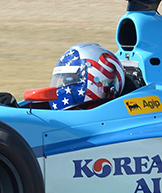
The Driver’s Series scours the world to find and explore compelling driving experiences for anyone with a driver’s license and passion for speed. We send our resident driver Jeff Francis to get behind the wheel and report back to Speed Journal readers to ride along virtually or become inspired to take on the driving experiences themselves. Are you involved with a driving experience that should be featured on The Speed Journal? Do you have a driving experience suggestion for The Speed Journal to investigate? Please contact us.



